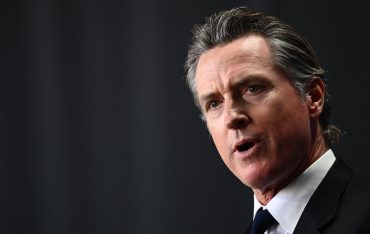
- Artificial Intelligence
- Private Markets
- Tech Valuations
OpenAI Reports $12B Revenue as Costs and Valuation Skyrocket
5 minute read

OpenAI’s ChatGPT platform fuels record revenue growth while massive infrastructure investments drive unprecedented spending
Key Takeaways
- Revenue nearly doubles to $12 billion annualized in the first seven months of 2025, with OpenAI generating approximately $1 billion per month and reaching 700 million weekly ChatGPT users.
- Cash burn surges to $8 billion projection for 2025, up $1 billion from earlier estimates, as the company spends $2.25 for every $1 earned amid operating expenses exceeding $28 billion.
- $300 billion valuation makes OpenAI world’s most valuable private company following a record $40 billion funding round, with SoftBank committing $32 billion total since late 2024.
Introduction
OpenAI reaches a critical inflection point as revenue growth accelerates alongside mounting financial pressures. The artificial intelligence company generates $12 billion in annualized revenue through the first seven months of 2025, nearly doubling its previous performance.
This revenue surge positions OpenAI as the dominant force in generative AI, yet the company faces unprecedented operational costs that threaten its path to profitability. The financial dynamics underscore the broader challenges facing AI companies as they scale rapidly while managing infrastructure demands.
Key Developments
OpenAI’s revenue trajectory shows remarkable acceleration from $3.7 billion in 2024 to $12.7 billion in 2025, representing a 243% increase. The company now captures a 17% share of the generative AI software and services market, with ChatGPT attracting approximately 700 million weekly active users.
The revenue milestone coincides with OpenAI’s preparation to launch GPT-5 in the first week of August. This next-generation model represents the company’s most advanced AI system to date, reinforcing its technological leadership in the sector.
However, operational expenses present significant challenges. OpenAI projects operating expenses exceeding $28 billion in 2025, with cash burn estimates rising to $8 billion from previous projections of $7 billion.
Market Impact
OpenAI’s funding activities continue attracting substantial investor interest despite the elevated cash burn rate. The company completed a record $40 billion funding round led by SoftBank and Microsoft, establishing a $300 billion valuation that makes it the world’s most valuable private company.
A second $30 billion funding phase draws major participation from Sequoia Capital and Tiger Global Management, with investors close to finalizing $7.5 billion in commitments. SoftBank’s total investment commitment reaches $32 billion since its initial backing in late 2024.
The funding dynamics reflect strong investor confidence in OpenAI’s market position, even as the company spends $2.25 for every dollar earned. This spending ratio highlights the capital-intensive nature of AI development and infrastructure scaling.
Strategic Insights
OpenAI’s business model drives a fundamental shift in the technology industry toward subscription-based and API-driven AI services. This transition moves away from traditional ad-supported models, creating new revenue streams for AI-powered productivity and automation tools.
The company’s major cost drivers include compute infrastructure and data center investments, including the Stargate project and a $12.9 billion deal with CoreWeave. These investments represent the infrastructure foundation necessary to support OpenAI’s growing user base and advanced model development.
Enterprise adoption patterns signal broader market acceptance of AI integration across business operations. OpenAI’s first-mover advantage in generative AI creates competitive barriers, though the company faces increasing competition from established technology giants and emerging AI startups.
Expert Opinions and Data
Industry analysts note the unprecedented scale of OpenAI’s growth trajectory since launching ChatGPT in late 2022. The platform became one of the fastest-growing applications in technology history, establishing new benchmarks for consumer AI adoption.
Reuters could not immediately verify the revenue figures, while OpenAI declined to provide official commentary on the reported numbers. This discretion reflects the competitive sensitivity surrounding financial performance in the rapidly evolving AI sector.
The company’s cash burn projection increase of $1 billion demonstrates the escalating costs associated with maintaining technological leadership. These expenses encompass research and development, computational resources, and talent acquisition in a highly competitive market for AI expertise.
Conclusion
OpenAI’s explosive revenue growth establishes the company as the definitive leader in commercial generative AI, yet financial sustainability remains the critical challenge ahead. The company’s ability to convert its massive scale into profitable operations will determine whether its current trajectory represents sustainable growth or unsustainable expansion.
The technology industry watches closely as OpenAI navigates the balance between innovation investment and operational efficiency. The company’s success in achieving profitability while maintaining its technological edge will likely influence the broader AI sector’s development and investor sentiment toward artificial intelligence ventures.








